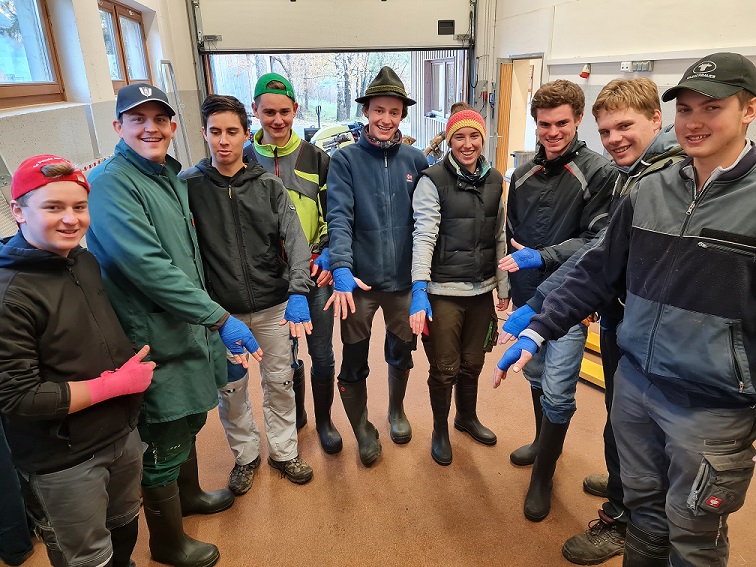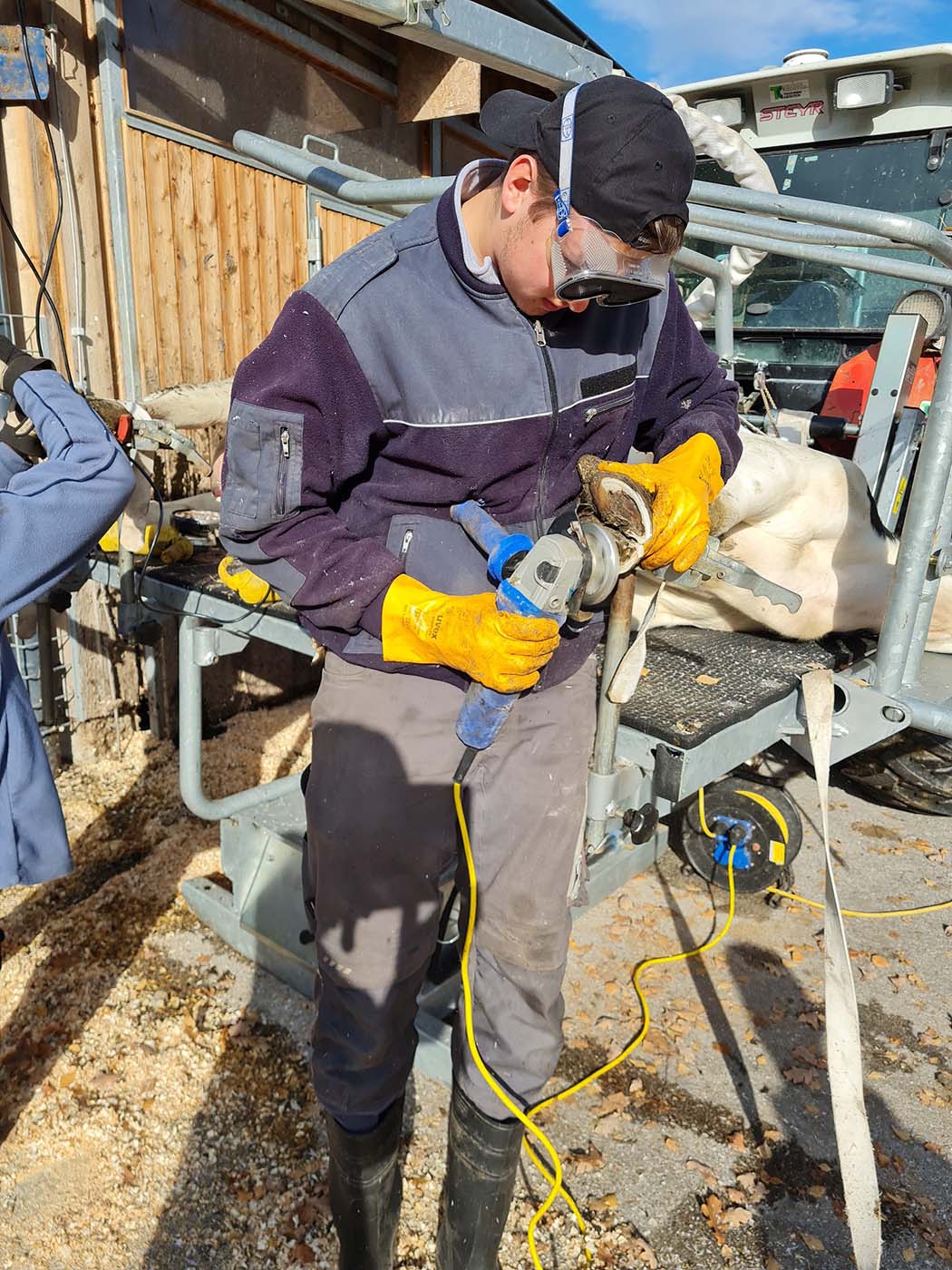In Austrian dairy herds, numerous projects and surveys have identified an average of around 30-50% lame animals. Factors such as feeding, stress, metabolism and also stable design can have a negative impact, milk production is reduced and veterinary treatment is required. The direct and indirect costs of lameness are estimated at approximately €450 per cow per year.
Basic course in hoof care
The HBLFA Raumberg-Gumpenstein has been the first school in Austria to offer a basic course in hoof care for its future farmers since 2021. The aim of the training is to offer additional knowledge on the subject of hoof health and animal welfare that goes beyond the curriculum and enables professional hoof care to be carried out on the farm.
This year, under the watchful eyes of hoof care expert Robert Pesenhofer from European Hoofcare and Johann Häusler from HBLFA Raumberg-Gumpenstein, nine students completed the hoof care course, a combination of school lessons and additional practical units in their free time, with great interest and commitment. This unique offer for students at the HBLFA Raumberg-Gumpenstein is based on the content of the ministerial guidelines GZ. BMLFUW-LE.1.1.7/0159-II/2/2013 and includes a total of 136 hours of theory and practice. The course was originally initiated for the further training of already practicing farmers.
Procedure of the course
On the first day, the existing knowledge from livestock farming lessons was refreshed and the basics of functional claw care, the biometrics of the underfoot and the recognition, treatment and prevention of claw diseases were explained in theory. Direktor Johann Gasteiner taught the interested students about animal diseases and animal health. The students completed the following five practical days with great enthusiasm and commitment. These included the evaluation of claws and the detection of claw diseases as well as chronic changes, posture problems, unfavorable feeding and a lack of claw care. Using templates, both healthy claws on living animals and diseased slaughterhouse claws were correctly cut and evaluated. The students also tried out the use of relief aids and the application of different bandages. Careful husbandry and lameness were observed in live animals and measures were developed to improve animal welfare.
Under the leadership of Johann Häusler, Robert Pesenhofer and the examination committee, all nine course participants demonstrated their newly acquired knowledge with a written exam, an oral technical discussion and the independent work on a claw and successfully completed the course.
Due to the great interest, the course will be offered annually in the future.

Further information on the subject of hoof health and training opportunities at the HBLFA Raumberg-Gumpenstein:
Acquisition department, Silke Schaumberger:
team

Dr. Silke Schaumberger
AcquisitionSimilar projects
2480: Claw Health
Animal welfare and hoof health
2020 - 2025, Schaumberger Silke
2481: Hoof training 189
The influence of adapted claw care on the different growth of the claws of the hind limbs of cattle
2020 - 2025, Häusler Johann






